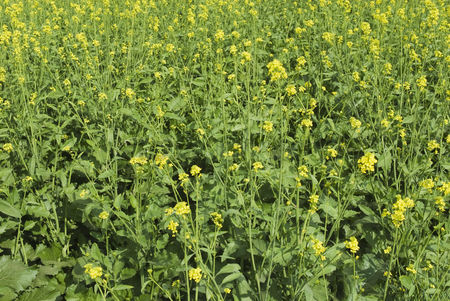The mustard plant is a versatile and fascinating plant species that’s grown extensively across the globe. Originating from the temperate regions of Europe, it has been cultivated for centuries for its seeds and leaves, both of which carry a distinctive pungent flavor.
There are several types of mustard plants, but the most commonly grown for culinary uses are white mustard (Sinapis alba), brown mustard (Brassica juncea), and black mustard (Brassica nigra).
Cultivation
Mustard plants are relatively easy to grow and are a popular choice for home gardeners. They prefer cool weather and can be planted early in the spring or late summer for a fall harvest. Mustard seeds are sown directly into well-drained soil and typically germinate within one to two weeks.
The plant is fairly hardy and can tolerate a light frost, which makes it a good choice for extending the gardening season. It grows best in full sun but can tolerate partial shade. The plants are also quick to mature, often ready to harvest within just 30 to 40 days.
Culinary Uses
The mustard plant has a wide range of culinary uses. The seeds, whether white, brown, or black, are often ground into a powder and mixed with water, vinegar, or other liquids to make mustard sauce, a popular condiment with a pungent, spicy flavor.
Whole mustard seeds are also used in cooking. They are often toasted to bring out their aromatic flavors before being used in dishes, especially Indian cuisine. Mustard oil, derived from the seeds, is commonly used in Indian and Bangladeshi cooking.
The leaves of the mustard plant, known as mustard greens, are a flavorful addition to salads and can be cooked much like spinach or collard greens. They have a slightly peppery taste and are rich in vitamins A, C, and K.
Medicinal and Other Uses
Beyond its culinary applications, the mustard plant also has several medicinal uses. Mustard seeds have been used in traditional medicine for their supposed anti-inflammatory, anti-fungal, and anti-cancer properties. Mustard plasters, made from ground mustard seeds, were once a common treatment for chest congestion.
The plant is also beneficial in crop rotations due to its ability to suppress soil-borne diseases and pests. Its flowers are also attractive to beneficial insects, aiding in the biodiversity of the garden ecosystem.
Conclusion
The mustard plant truly is a marvel, with its myriad of uses spanning the culinary, medicinal, and agricultural worlds. Its spicy seeds and flavorful greens have cemented its place in kitchens around the world, while its hardiness and benefits to the soil make it a favorite among gardeners. So next time you spread some mustard on your sandwich, remember, this humble condiment comes from an incredibly versatile plant.
